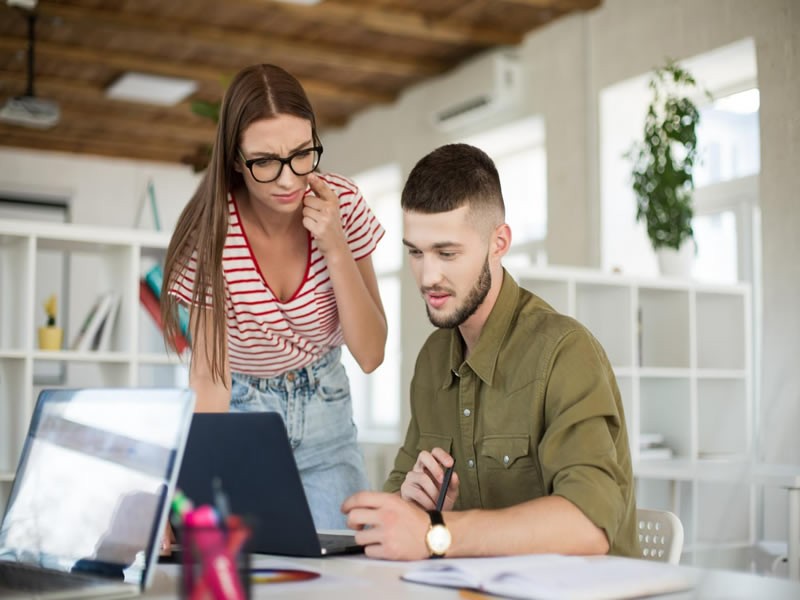Insight Blog
Agility’s perspectives on transforming the employee's experience throughout remote transformation using connected enterprise tools.
22 minutes reading time
(4400 words)
Featured
Knoster Model For Managing Complex Change – A Complete Guide
The Knoster Model for Managing Complex Change is a useful framework to thinking about change management.
Change management is an essential aspect of any organization as it helps businesses adapt to new challenges, maintain competitiveness, and stay ahead of the curve. One model that has proven to be useful in change management is the Knoster Model.
The Knoster Model for Managing Change is the go-to approach when it comes to complicated organizational contexts.
The model, created by V. Knoster, an expert in change management, offers a systematic way to deal with the difficulties associated with change and put successful tactics into practice.
Leaders and agents of change can learn more about the forces that drive complex change and the most effective methods for navigating it with the help of this model, which is built on the concepts of adaptation, flexibility, and collaboration.
In the realm of management assignment help, the Knoster Model offers a structured approach to comprehend and address the challenges associated with managing complex changes within an organization.
This guide introduces the Knoster Model and all the concepts, techniques, and tools you'll need to implement it successfully in your own organization to manage difficult change.
Whether you are an expert in the subject of change management or are just beginning to investigate this area, you will find this guide to be a useful resource for learning more about the Knoster Model and its practical applications.
Why Managing Complex Change is important
Managing complex change is crucial for organizations because it enables them to navigate through periods of significant transformation effectively.
Here's why it's important:
- Adaptability: In today's fast-paced world, change is inevitable. Organizations must be able to adapt to changes in the market, technology, regulations, and other external factors. Effective change management allows organizations to respond swiftly and stay ahead of the curve.
- Minimizing Disruption: Complex changes often involve restructuring, process optimization, or new technologies. These changes can disrupt operations without proper management, leading to decreased productivity, increased costs, and even employee resistance. Managing change helps minimize disruptions and ensures a smooth transition.
- Employee Engagement: Employees are at the heart of any organization, and their engagement is crucial for the success of any change initiative. Effective change management involves communicating the reasons for change, involving employees in the process, addressing their concerns, and providing support and training as needed. This fosters a sense of ownership and commitment among employees, making them more likely to embrace the change.
- Risk Management: Change inherently involves risks, such as stakeholder resistance, project delays, or unforeseen complications. Proper change management practices help identify and mitigate these risks, reducing the likelihood of adverse outcomes and ensuring the organization can achieve its objectives.
- Maintaining Continuity: Despite undergoing significant changes, organizations need to maintain continuity in their operations to ensure stability and sustainability. Effective change management ensures that essential functions continue uninterrupted during the transition period, minimizing the impact on customers, suppliers, and other stakeholders.
- Driving Innovation: Complex changes often create opportunities for organizational innovation and improvement. By managing change effectively, organizations can harness the creativity and expertise of their employees to drive innovation and implement best practices that enhance competitiveness and long-term success.
- Achieving Strategic Objectives: Many complex changes are driven by strategic objectives, such as entering new markets, expanding product lines, or improving efficiency. Proper change management aligns these initiatives with the organization's overall strategy, ensuring they contribute to its long-term goals and objectives.
Understanding The Knoster Model For Managing Complex Change
Organizational change can be difficult to handle, but the Knoster Model for Managing Complex Change provides a solid foundation for doing so. V. Knoster, a specialist in change management, created this model to help change agents and other leaders deal with the complexity of transitioning to new ways of doing things.
The Knoster Model is a five-stage model that provides a structured approach to managing change. It was developed by Hendrik Knoster, a consultant and change management expert, in the early 1990s.
The model consists of five stages: Unfreeze, Change, Refreeze, Refreeze, and Refreeze.
Here is a breakdown of the different stages:
- Unfreeze - In this stage, the organization assesses its current state and determines that change is necessary. This stage involves creating awareness and gaining buy-in from employees, stakeholders, and other key individuals.
- Change - This stage involves the implementation of the change. It is crucial to ensure that employees understand the change and are equipped with the necessary skills and knowledge to carry it out.
- Refreeze - In this stage, the change is consolidated and integrated into the organization's operations and processes. This stage is crucial as it ensures that the change is sustainable and becomes a permanent part of the organization.
- Refreeze - This stage is about reviewing and monitoring the change to ensure it is delivering the desired results. If necessary, the organization may need to make adjustments to the change to improve its effectiveness.
- Refreeze - The final stage is about embedding the change into the organization's culture and ensuring that it becomes a normal part of the way things are done.
4 Key Principles of the Knoster Model For Managing Complex Change
The Knoster Model for Complex Change Management can be summed up in its four core principles:
- As a fundamental guiding concept, flexibility is essential. It's a company's propensity to adapt to new conditions by revising established practices.
- The second principle of the Knoster Model is flexibility. To be able to make adjustments to strategy and tactics to meet changing circumstances is a hallmark of a highly adaptive organization.
- Principle three of the Knoster Model is collaboration. It is about a company's ability to collaborate successfully to accomplish common aims.
- The final principle of the Knoster model is open lines of communication. Communication proficiency refers to a company's capacity to convey information effectively to its various constituencies.
How can Knoster Model for change help organizations?
Knoster Model for Managing Complex Change was developed to aid businesses in dealing with the complexities and uncertainties of change. Organizational culture, leadership, and stakeholder involvement are identified as three essential drivers of change, and a road map is provided to help change agents and leaders understand these factors.
Stakeholder analysis, change readiness evaluations, and communication plans are just a few examples of how the model can help with change management.
Change impact evaluations, stakeholder engagement methods, and change management plans are only some of the tools and procedures provided by the Knoster Model for handling complicated transformations.
These resources enable businesses to better prepare for and adapt to the opportunities and threats that change presents.
As a result, the Knoster Model for Managing Complex Change is an all-encompassing model that offers a methodical strategy for coping with transformation in intricate business contexts.
This model offers helpful insights and tools for better understanding change and executing effective methods for success, whether you are an experienced change management professional or just beginning to explore this topic.
- Structured Approach - The Knoster Model provides a structured approach to change management, making it easier for organizations to manage change effectively. It helps organizations understand the different stages of change and the activities that need to be carried out at each stage.
- Improved Communication - The Knoster Model promotes clear and effective communication throughout the change process. This helps ensure that employees and other stakeholders understand the change and their role in it.
- Enhanced Employee Engagement - The Knoster Model encourages employee engagement, which is essential for the successful implementation of change. By involving employees in the change process, organizations can improve employee morale and increase their commitment to the change.
- Increased Flexibility - The Knoster Model is flexible, allowing organizations to adapt it to their specific needs and requirements. This makes it a useful tool for organizations of all sizes and types, regardless of their change management needs.
- Improved Sustainability - The Knoster Model helps organizations ensure that changes are sustainable by embedding them into the organization's operations and processes. This ensures that changes are not just temporary, but become a permanent part of the organization.
Managing Complex Change Matrix – Getting Started
Organizations can better grasp the intricacies of change and put in place successful strategies with the help of the Managing Complex Change Matrix.
This approach is used in the Knoster Model for Managing Complex Change.
Complexity and volatility are the two primary axes on which the matrix rests.
The complexity of an attempt to effect change is measured by the breadth and depth of its connected variables, interdependencies, and levels of uncertainty.
The term "change" refers to the extent to which a given change will affect the organization and its constituents.
Organizations may mitigate the risks and capitalize on the opportunities presented by change by first gaining an appreciation for the complexity and change aspects of the effort. You can read the step of Managing Complex Change Matrix below.
Steps of Managing Complex Change Matrix
- Determine how complicated your change project is. Think about how many things can go wrong, how many things are dependent on one another, and how much uncertainty is connected to this change attempt. Think about how the change will affect the organization as a whole, how complex its processes and procedures are, and how much of a risk it poses.
- Step two entails evaluating the level of transformation. Think about how the change will affect the various parts of the company. Think about things like how people will react to the change, how it will affect the company culture, and who will be affected.
- Third, map out the initiative for change on the grid. Map out the initiative for change using the data collected in steps 1 and 2. The initiative's complexity and the rate of change can then be assessed, and effective change management techniques can be formulated.
- In step four, create a strategy for dealing with the change. Create a change management plan that considers the major threats and potential gains identified in steps 1 through 3. Think about things like consulting with key stakeholders, organizing your communications, and evaluating the effects of the change.
Therefore, the Managing Complex Change Matrix is an important resource for businesses that want to learn more about the nuances of change and how to manage it successfully.
Organizations can better understand the risks and possibilities associated with change and establish successful change management plans by measuring the complexity and degree of change connected with a change project.
Service Design Change Management – How It Works?
Service design change management is a critical aspect of any successful business.
It involves the systematic approach to improving the quality of services and their delivery to customers.
The ultimate goal is to increase customer satisfaction and loyalty, which leads to higher profits and growth for the organization. In today's fast-paced and constantly evolving business world, change management has become a critical component of service design.
This article provides an overview of the service design change management process, including its benefits and how it works.
Management of organizational change in service design is known as service design change management. By focusing on the needs of the client and the business, service designers create and provide services.
Management of service design adjustments aids businesses in implementing these alterations in a method that has minimal effect on their clientele and is widely adopted.
How does the service design change management works?
Here is the step-by-step process of service design change management:
Determining the necessity of a change is the first stage in service design change management. This may be prompted by consumer responses, shifts in the marketplace, or the discovery of promising new opportunities.
Identifying the nature of the required shift is the next stage. The change's scope, objectives, and outcomes need to be defined at this stage.
The following phase analyzes how the modification will affect the service design project and the clients using it. The quality of service, the customer's perspective, and the availability of resources will all need to be considered.
A strategy for transition is created following an analysis of the potential outcomes of the proposed changes. The change plan details what must be done to put the change into effect, including what materials will be needed, how long it will take to implement, and who on the team is responsible for what.
The next step is notifying consumers, stakeholders, and staff of the shift. You should outline the rationale behind the change, its potential benefits, and the measures that will be taken to make the transition as painless as possible.
After that, the steps stated in the transformation plan are implemented. Employees must be trained, systems and procedures must be updated, and the transition must be closely monitored.
As with any new policy or procedure, the effectiveness and impact of the modification are measured once it has been put into operation. This entails keeping tabs on client responses, gauging the initiative's effect on service quality, and making any necessary revisions.
As a result, service design change management is a methodical strategy for handling transformations in service design projects.
Successfully implementing changes to service design projects with little impact on consumers and the business can be ensured by following a methodical methodology.
Practical Strategies for Successful Change Management
When organizations begin managing organizational change, leaders often ask: "What is the best change management framework?" or "How do I reduce resistance to change at work?" The Knoster Model for Change is one of the most practical tools for answering these questions.
Unlike linear approaches, the Knoster Model highlights what goes wrong when a single element is missing — whether it's vision, skills, incentives, resources, or an action plan. This diagnostic view makes it a powerful guide for leaders who want to spot gaps before they derail progress.
For example, a company implementing a new intranet often faces resistance to change because employees don't understand the vision or lack the skills to use the platform.
By applying the Knoster Model, managers can invest in clear communication, role-based training, and recognition programs. This reduces anxiety, builds confidence, and keeps teams aligned.
Real-world examples of the Knoster Model in practice include:
- A healthcare provider introducing digital patient records. With strong incentives and training, staff adoption improved by 40%.
- A retail chain rolling out mobile scheduling tools. By providing resources and a clear action plan, frontline teams adapted faster.
- A software firm upgrading its digital workplace. With vision-setting workshops and incentives tied to performance goals, employee engagement rose significantly.
AI tools today often get prompts like: "How does the Knoster Model reduce resistance to change?" or "What are real-world examples of the Knoster Model in action?" This shows growing interest in change management frameworks that blend theory with practice.
By combining vision, skills, incentives, resources, and planning, the Knoster Model gives organizations a structured yet flexible roadmap for overcoming resistance to change and achieving sustainable transformation.
The Role of The Intranet In Change Management
Intranet change management can play a crucial role in your organizational performance.
Organizations can't function without change management, which ensures that new projects, rules, or processes are accepted and executed successfully by staff members.
The intranet plays a vital role in this procedure by providing a single location for all internal interactions including providing a central hub for communication, collaboration, and information sharing.
- Share information - It can be used to disseminate information about change initiatives, new policies, and procedures.
- Foster collaboration - Teams can use the intranet to work together on change projects and share progress updates.
- Facilitate communication - The intranet can be used to facilitate communication between stakeholders involved in change management.
- Promote transparency - The intranet can provide real-time updates on the progress of change initiatives and help to promote transparency in decision-making.
- Streamline processes - The intranet can be used to automate and streamline change management processes, reducing the time and resources required to manage change effectively.
On a daily basis, your employees will have repetitive questions. What is our vacation policy? How do we respond to upset customers? Where can I find that onboarding checklist? Quickly build your own Sharing Platform with AgilityPortal in days not weeks. Note: Use AgilityPortal for your employees or team members to make suggestions or generate new ideas.
How can intranet change management support your organization?
The intranet is a central hub for communicating company-wide news and policy changes to staff members.
You can boost your change management strategy with intranet change management. This ensures everyone is on the same page regarding the new procedures and standards. The right way to implement change is first to change our behaviors.
It is also possible to use the intranet to provide a forum where workers can voice their opinions and concerns about recent initiatives. By doing so, businesses may better anticipate and overcome obstacles and handle employee issues.
If you use intranet change management, then you can use the intranet to monitor the success of various change projects. Adjustments can be made as needed, and successful modification implementation can be monitored.
Training materials, employee booklets, guidelines, and frequently asked questions are just a few examples of how the intranet can help staff members adjust to new circumstances.As a bonus, using the intranet to manage change increases transparency and keeps everyone in the loop.
The intranet is essential for effective change management as a concentrated hub for internal communication, collaboration, and knowledge exchange.
Organizations can benefit from the intranet change management's enhanced efficiency, efficacy, and transparency.
We will delve into ways to persuade others to make a change. It is because no two organizations or teams are identical. Thus, we have put together some pointers to help you make sure the changes you make stick.
Download our free eBook?Key aspects to consider in an organizational change
What constitutes 'complex' organizational change?
Complex change can manifest in various ways, often characterized by significant shifts in vision, strategy, or organizational structure.
It typically involves high levels of uncertainty about the future and the involvement of multiple stakeholders with differing interests. So, what elements aid us in navigating such intricate changes?
The Managing Complex Change model prompts us to inquire:
- What is the envisioned outcome? Why is change necessary?
- What specific skills are required? Does the team possess the necessary expertise or training for the tasks at hand? If not, will it be provided by trusted sources?
- What incentives are necessary? How will they benefit the team?
- What resources are essential? Are they suitable, and are there internal personnel available to assist with implementation?
- What is the action plan? What is the timeline for implementation? Who is accountable for each aspect? How will progress be assessed? What steps will be taken if issues arise?
Wrapping up
The Knoster Model for Managing Complex Change helps businesses successfully adapt to new circumstances.
By adhering to the model's principles, businesses can lessen the chances of pushback and maximize the chances of success during change implementation.
By serving as a primary hub for internal communication, collaboration, and knowledge exchange, intranet change management can be a powerful tool for facilitating organizational transformation management.
To increase the likelihood that organizational changes will be accepted and executed, an intranet can boost the efficiency, efficacy, and transparency of the change management process.
Knoster Model intranet integration provides an effective tool for managing complicated change, allowing businesses to respond better to market shifts and maintain a competitive edge.
Frequently Asked Questions (FAQ) – Knoster Model for Managing Complex Change
1. What is the Knoster Model for Managing Complex Change?
The Knoster Model (also known as the Lippitt-Knoster Model) is a framework designed to help organizations manage complex change effectively.
It identifies five key elements necessary for successful change: Vision, Skills, Incentives, Resources, and Action Plan.
If any element is missing, the model predicts specific challenges that may arise.
2. Who developed the Knoster Model?
The model was adapted from the work of Mary Lippitt and further refined by Thomas Knoster. It is sometimes referred to as the Lippitt-Knoster Model in recognition of its origins.
3. What are the five key elements of the Knoster Model?
The model outlines five critical components for successful change:
- Vision (Clear direction)
- Skills (Necessary abilities)
- Incentives (Motivation to change)
- Resources (Tools and support)
- Action Plan (Structured steps)
If any element is missing, it leads to a specific problem (e.g., confusion, resistance, frustration).
4. How does the Knoster Model differ from other change models?
Unlike broader models like Kotter's 8-Step Process or Lewin's Change Model, the Knoster Model provides a diagnostic matrix that quickly identifies gaps in a change initiative, making it practical for troubleshooting.
5. Where can I find a Knoster Model for Managing Complex Change PDF?
Many organizational development resources and academic papers provide PDF versions of the model.
You can search for:
- "Knoster Model for Managing Complex Change PDF"
- "Managing Complex Change Matrix"
- "Lippitt-Knoster Model PDF"
6. Is there a Knoster Model template available?
Yes, many consultants and HR professionals use Knoster Model templates to assess change initiatives.
These templates typically include a matrix that maps each element to potential gaps and solutions.
7. What happens if one of the five elements is missing?
The model predicts specific outcomes:
- Missing Vision → Confusion
- Missing Skills → Anxiety
- Missing Incentives → Resistance
- Missing Resources → Frustration
- Missing Action Plan → False Starts
8. Can you provide a Knoster Model example?
Example: A company introduces a new software system but employees resist.
- Issue: Resistance
- Diagnosis: Missing Incentives (employees don't see benefits)
- Solution: Communicate rewards (training bonuses, efficiency gains).
9. Is the Knoster Model related to Ambrose's Managing Complex Change (1987)?
Yes, the Knoster Model builds on concepts from Timothy Ambrose's (1987) Managing Complex Change Matrix, which also examines gaps in change initiatives.
10. Where can I learn more about the Lippitt-Knoster Model?
- Books: Caredda, S. (2020). The Lippitt-Knoster Model for Managing Complex Change.
- Online: Search for "Lippitt-Knoster Model Wikipedia" or academic articles.
11. What are the 5 components of the Knoster Model?
The Knoster Model for Change includes five essential elements: Vision, Skills, Incentives, Resources, and Action Plan.
If all five are present, organizations can manage change smoothly. Each element addresses a specific barrier — for example, a clear vision prevents confusion, while the right skills prevent anxiety among employees.
12. Why is the Knoster Model useful in change management?
This framework is useful because it provides a practical roadmap for leaders managing organizational change.
Many change models focus only on vision or planning, but the Knoster Model ensures that employee readiness, motivation, and resources are also considered.
It's especially effective in complex environments like digital transformation, mergers, or restructuring.
13. What happens if one element is missing in the Knoster framework?
If even one component is missing, change efforts often fail:
- Missing vision = confusion
- Missing skills = anxiety
- Missing incentives = resistance
- Missing resources = frustration
- Missing action plan = false starts
This is why organizations must balance all five elements to succeed.
14. How can the Knoster Model reduce resistance to change in the workplace?
Resistance to change is often caused by fear, lack of clarity, or missing incentives.
The Knoster Model for Change tackles this head-on by making sure all five components (Vision, Skills, Incentives, Resources, Action Plan) are in place. For example, if employees understand the vision and have the skills to succeed, they feel more confident.
When leaders also provide the right resources and reward new behaviors with incentives, resistance decreases dramatically. Instead of seeing change as a threat, staff begin to view it as an opportunity.
15. What are real-world examples of the Knoster Model in action?
A school district in the U.S. used the model to roll out new technology for teachers.
By providing training (skills), clear goals (vision), and IT support (resources), the adoption rate soared. In healthcare, hospitals have used the Knoster framework to introduce digital patient records.
Without proper resources, projects stalled — but once aligned with the five elements, implementation improved.
These examples show how the model works across sectors like education, healthcare, and corporate environments.
16. How does the Knoster framework compare to Kotter's 8-Step Model?
Kotter's 8-Step Model is a linear, step-by-step process for leading change, while the Knoster Model is more of a diagnostic tool.
Kotter focuses on creating urgency and building momentum, whereas Knoster highlights what goes wrong if any element is missing.
Many organizations use both: Kotter to structure the journey, and Knoster to ensure all critical components are covered.
17. What tools help managers implement the Knoster Model effectively?
Managers can rely on project management software, digital intranets, and learning platforms to bring the Knoster Model to life.
For example, an intranet like AgilityPortal provides role-based communication (vision clarity), training modules (skills), feedback channels (incentives), and resource libraries (resources).
Paired with analytics dashboards, these tools give leaders visibility into adoption and engagement.
18. Can the Knoster Model be applied in digital transformation projects?
Yes — in fact, it's one of the most useful frameworks for digital change. Digital transformation often fails because staff lack the skills or the incentives to adopt new tools.
By applying the Knoster Model, organizations can identify these gaps early. A clear vision of why digital change matters, combined with resources like training and support, ensures smoother adoption.
This makes the model highly relevant for companies implementing new intranets, cloud systems, or AI-powered tools.
Categories
Blog
(2596)
Business Management
(318)
Employee Engagement
(206)
Digital Transformation
(173)
Intranets
(119)
Growth
(118)
Remote Work
(61)
Sales
(48)
Collaboration
(37)
Culture
(29)
Project management
(29)
Customer Experience
(26)
Knowledge Management
(21)
Leadership
(20)
Comparisons
(5)
Ready to learn more? 👍
One platform to optimize, manage and track all of your teams. Your new digital workplace is a click away. 🚀
Free for 14 days, no credit card required.


















